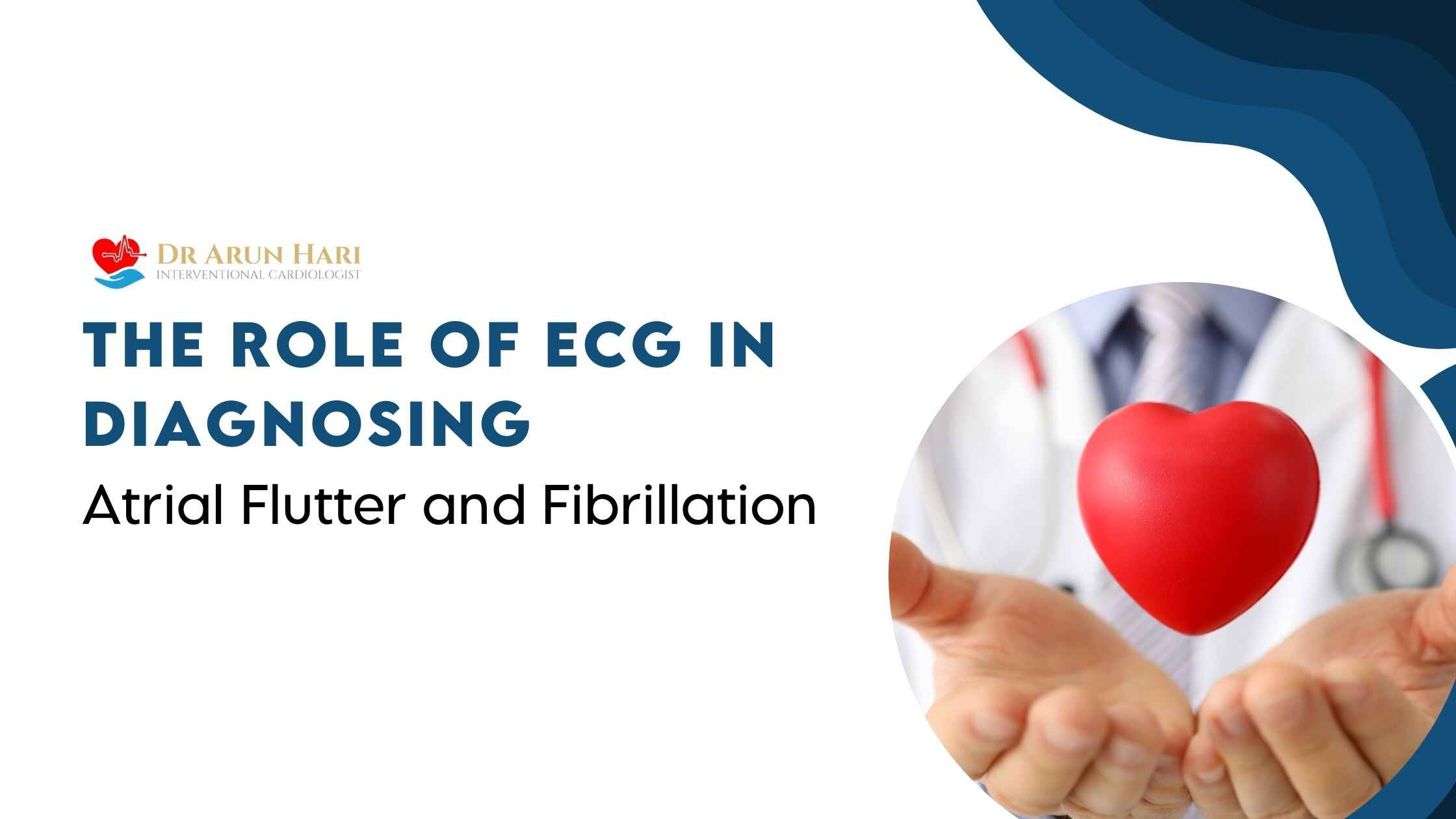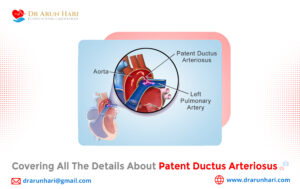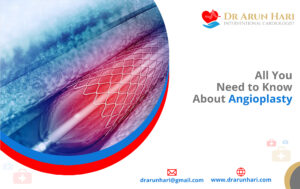Did you know that atrial fibrillation affects over 37 million people worldwide, making it the most common sustained cardiac arrhythmia? The importance of timely and accurate diagnosis cannot be overstated. If left untreated, atrial flutter and fibrillation can significantly increase the risk of stroke and heart failure. Understanding the ECG of atrial flutter and its distinction from atrial fibrillation is crucial for effective management. Dr. Arun Hari, a highly skilled interventional cardiologist, specializes in detecting and treating these conditions with precision and expertise.
Understanding Atrial Flutter and Fibrillation
Atrial flutter and atrial fibrillation are both types of abnormal heart rhythms, known as atrial arrhythmias. While they may share similarities, they have distinct characteristics that must be identified through an ECG.Key Differences Between Atrial Flutter and Atrial Fibrillation
- Atrial flutter: Characterized by rapid, organized electrical activity in the atria, often displaying a distinctive sawtooth wave ECG pattern.
- Atrial fibrillation: Marked by chaotic electrical impulses that lead to an irregular heartbeat, which is identifiable through atrial fibrillation on an ECG.
The Importance of ECG in Diagnosis
An electrocardiogram (ECG) is the gold standard for diagnosing these arrhythmias. By analyzing the ECG findings of atrial fibrillation, cardiologists can determine the severity and appropriate treatment strategy. Dr. Arun Hari utilizes advanced ECG interpretation techniques to ensure an accurate and timely diagnosis.Recognizing Atrial Flutter and Fibrillation on ECG
When assessing an ECG, a cardiologist looks for specific patterns. The presence of a sawtooth wave ECG strongly indicates atrial flutter, while erratic, irregular waveforms suggest atrial fibrillation.Distinguishing Normal and Abnormal ECG Readings
For a patient, understanding the difference between a normal ECG vs atrial fibrillation can be crucial. A normal ECG shows a consistent rhythm with clear P waves, while atrial fibrillation presents as an irregular rhythm with absent P waves.Complications If Left Undiagnosed
If not properly diagnosed, atrial arrhythmias can progress, leading to more severe conditions such as ventricular flutter ECG abnormalities, heart failure, and increased stroke risk. Early detection with an ECG can prevent these complications.Why Choose Dr. Arun Hari?
When it comes to diagnosing and treating atrial arrhythmias, expertise matters. Dr. Arun Hari offers:- Advanced ECG interpretation for atrial flutter and fibrillation ECG analysis.
- Customized treatment plans to address individual patient needs.
- Comprehensive care, from diagnosis to long-term heart health management.
Take Action Before It’s Too Late
Ignoring the symptoms of atrial arrhythmias can be life-threatening. If you or a loved one experience palpitations, dizziness, or unexplained fatigue, it’s time to consult an expert. Schedule a consultation with Dr. Arun Hari today and take control of your heart health.To Summarize
The role of ECG in diagnosing atrial flutter and fibrillation is indispensable. By identifying auricular flutter and other arrhythmic conditions early, patients can receive timely interventions that prevent serious complications. With the expertise of Dr. Arun Hari, you can ensure a precise diagnosis and effective treatment.FAQ: The Role of ECG in Diagnosing Atrial Flutter and Fibrillation
1. What is an ECG, and how does it help in diagnosing atrial flutter and fibrillation?
An electrocardiogram (ECG) is a test that records the electrical activity of the heart. It helps identify abnormal heart rhythms by detecting patterns that indicate conditions like ECG of atrial flutter and atrial fibrillation on an ECG. Dr. Arun Hari uses ECG as the primary tool for diagnosing and differentiating these arrhythmias.
2. What are the key ECG findings of atrial fibrillation?
Key findings include an absence of P waves, irregular R-R intervals, and fibrillatory waves that indicate disorganized atrial activity. These features help distinguish atrial fibrillation from other arrhythmias.
3. What is a sawtooth wave ECG, and what does it indicate?
A sawtooth wave ECG is a characteristic finding in atrial flutter, where the atrial electrical activity appears as a continuous, uniform wave resembling a sawtooth. This pattern helps in differentiating atrial flutter from atrial fibrillation.
4. How can an ECG differentiate between atrial flutter and atrial fibrillation?
The differences in atrial flutter and fibrillation ECG findings help doctors make an accurate diagnosis. Atrial flutter presents as a sawtooth pattern, while atrial fibrillation appears as chaotic, irregular waveforms with no distinct P waves.
5. What is ventricular flutter ECG and how does it relate to atrial arrhythmias?
A ventricular flutter ECG shows rapid ventricular activity without distinct atrial waves, which can be a serious condition often requiring immediate intervention. Dr. Arun Hari emphasizes timely ECG evaluation to prevent complications.
6. How does a normal ECG vs atrial fibrillation differ?
A normal ECG shows regular P waves and a consistent heart rhythm, whereas atrial fibrillation presents with an irregular rhythm and absent P waves. Recognizing these differences is essential for proper diagnosis and treatment.
7. What is auricular flutter and how does it appear on an ECG?
Auricular flutter is another term for atrial flutter, where the atria contract too fast, leading to a sawtooth pattern on an ECG. Early detection through ECG by Dr. Arun Hari can prevent complications.
8. What solutions does Dr. Arun Hari offer for atrial arrhythmias?
Dr. Arun Hari provides a range of treatment options, including medication management, catheter ablation, and advanced interventions tailored to each patient’s needs. His expertise ensures accurate diagnosis and effective treatment for patients experiencing atrial flutter or atrial fibrillation.
9. How can I schedule an appointment with Dr. Arun Hari?
If you are experiencing symptoms of atrial flutter or atrial fibrillation, visit Dr. Arun Hari’s website to schedule a consultation. Early diagnosis with ECG can prevent serious complications.





